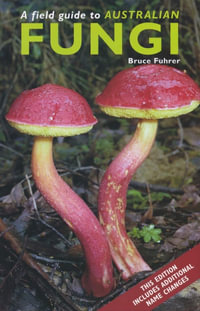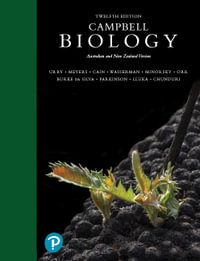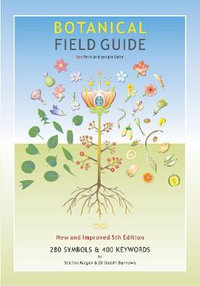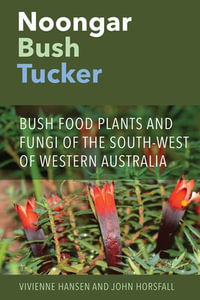
Integrated Management of Fruit Crops and Forest Nematodes
By: Aurelio Ciancio (Editor), K.G. Mukerji (Editor)
Hardcover | 30 April 2009
At a Glance
368 Pages
23.39 x 15.6 x 2.06
Hardcover
$264.27
or 4 interest-free payments of $66.07 with
orAims to ship in 7 to 10 business days
The fourth volume of the IPMD Series covers, in three Sections, emerging issues in the integrated management of main nematode parasites of fruit, tree and forest crops. The chapters provide basic data about the crops concerned, listing main nematode threats, in order to facilitate their detection and management. Special attention is given to the management strategies as experienced by farmers, nematologists and consultants, in different areas of the world, including exploitation of plant resistance sources and integrated or organic management.
The first Section covers key nematode parasites of tropical fruit crops, including banana, cocoa, coffee, citrus and other tropical crops, and the related management options. In the second Section, nematode problems of grapevine and other Mediterranean crops such as pistachio, Prunus spp. and olive are revised. Epidemiolgy data and management options are given, ranging from the status of grapevine resistance to vector species, to available chemicals, plant quarantine schemes and virus vectors control tools. In the third final Section, an updated review of Pine Wilt Nematode is provided, with new data on the threat represented by its spreading in Western Europe. The book approaches a broad range of subjects in a traditional way, with dedicated and detailed chapters, written by experienced nematologists, on defined topics. This approach provides a focus on the nematological issue of interest or that the reader has to afford, allowing the problem identification and illustrating the solutions developed and experienced by the authors. The general aim of the book, in an integration effort with Vol. 2 of the same IPMD series, is to provide updated background data together with a range of solutions for important nematode pests, worldwide.
The volume is directed to students, technicians, extensions and scientists, providing contents of a professional level. Basic concepts and practical examples are provided to enable the reader to analyse and act in relation to his own conditions, crop environment and nematode population parameters. Among the features and benefits of the book also figure practical management data, updated bibliographies and exhaustive illustrations.
| Preface | p. xv |
| Tropical Fruit Crops and Commodities | |
| Integrated Management of Banana Nematodes | p. 3 |
| Introduction | p. 3 |
| Botanical and Economical Backgrounds on Bananas | p. 4 |
| Integrated Nematode Management: Concept Definition and Applications | p. 7 |
| Dessert Bananas for Export | p. 8 |
| Geographic Distribution of Associated Nematode Species | p. 8 |
| Basic Studies on Nematode Biology | p. 10 |
| Damage and Economic Importance | p. 13 |
| Nematode Control: The Golden Age of Nematicides (1960-1990) | p. 15 |
| Research of an Alternative to Chemical Control | p. 16 |
| Future Prospects | p. 17 |
| Nematode on Bananas in Asia and Oceania | p. 17 |
| Introduction | p. 17 |
| Nematode Species | p. 18 |
| Importance and Damage Potential | p. 21 |
| Nematode Management | p. 21 |
| Future Prospects | p. 22 |
| Nematodes on Bananas in Africa | p. 22 |
| The Nematode Problem | p. 22 |
| Nematode Species Occurrence | p. 23 |
| Importance and Potential Damage | p. 26 |
| Current Nematode Management | p. 27 |
| Clean Planting Material | p. 27 |
| Cultivated Fallow and Alternate Cropping | p. 28 |
| Mulching and Fertilisers | p. 28 |
| Future Prospect | p. 29 |
| Nematodes on Banana in America | p. 30 |
| The Nematode Problem | p. 30 |
| The Nematode Species Occurrence | p. 31 |
| Importance and Damage Potential | p. 32 |
| Nematode Management | p. 33 |
| Future Prospects | p. 33 |
| Future and Common Strategies | p. 34 |
| Plant Health Measures | p. 34 |
| The Search for Sources of Resistance to Nematodes | p. 36 |
| Resistance to the Burrowing Nematode R. similis | p. 37 |
| Resistance to the Lesion Nematode Pratylenchus spp. | p. 37 |
| Resistance to the Root-Knot Nematode Meloidogyne spp | p. 38 |
| Resistance to the Spiral Nematode Helicotylenchus multicinctus | p. 38 |
| Tolerance to Nematodes | p. 38 |
| New Synthetic Banana Hybrids and Their Response to Nematodes | p. 39 |
| Resistance Mechanisms and Plant Defence | p. 40 |
| Transgenic Resistance | p. 41 |
| Biological Control | p. 41 |
| Soil Treatment with Antagonistic Microorganisms | p. 42 |
| Induction of In Planta Suppressiveness | p. 42 |
| Cultural Practice Improvements | p. 44 |
| Conclusion | p. 44 |
| References | p. 45 |
| Nematodes of Tropical Fruit crops in Venezuela | p. 63 |
| Introduction | p. 63 |
| Nematodes by Crop | p. 64 |
| Acerola (Malpighia glabra) | p. 64 |
| Avocado (Persea americana) | p. 65 |
| Banana and Plantain (Musa AAA and AAB) | p. 65 |
| Breadfruit (Artocarpus altilis) | p. 66 |
| Cashew (Anacardium occidentale) | p. 66 |
| Citrus (Citrus spp.) | p. 66 |
| Coconut (Cocos nucifera) | p. 71 |
| Date Palm (Phoenix dactylifera) | p. 73 |
| Fig (Ficus carica) | p. 73 |
| Grapevine (Vitis sp.) | p. 73 |
| Guava (Psidium guajava) | p. 74 |
| Mango (Mangifera indica) | p. 75 |
| Papaya (Carica papaya) | p. 76 |
| Passionfruit (Passiflora edulis f. sp. flavicarpa) | p. 77 |
| Peach (Prunus persica) | p. 78 |
| Pineapple (Ananas comosus) | p. 79 |
| Sapodilla (Manilkara zapota) | p. 80 |
| Tamarind (Tamarindus indica) | p. 80 |
| References | p. 80 |
| Concepts in Management of Tree Crops Nematodes in Fruit Production Systems | p. 85 |
| Introduction | p. 85 |
| Good Quality of Root, and Balanced Plants | p. 88 |
| Concepts of Resistance and Tolerance | p. 88 |
| Rootstocks and Nematodes | p. 89 |
| Nematodes Management Strategies | p. 90 |
| Virgin Soils | p. 90 |
| Fumigations | p. 91 |
| Replants | p. 91 |
| Treatments | p. 92 |
| Fumigation | p. 92 |
| Doses and Dates | p. 92 |
| Application | p. 93 |
| Concentration | p. 93 |
| Volume of Treated Soil | p. 94 |
| Elicitors of Resistance | p. 94 |
| Soil Conditions | p. 95 |
| Diagnosis | p. 95 |
| Plant Vigor | p. 95 |
| Test Pits Analysis | p. 95 |
| Sampling Strategies | p. 96 |
| Treatments | p. 96 |
| Minirhizotrons | p. 97 |
| Other Management Strategies | p. 98 |
| References | p. 98 |
| Nematodes Management in Coffee Production Systems | p. 101 |
| Introduction | p. 101 |
| Cropping Systems | p. 105 |
| Natural or Mountain System | p. 105 |
| Traditional Polyculture System | p. 106 |
| Specialized System | p. 108 |
| Commerical Polyculture System | p. 109 |
| Sunlight System | p. 109 |
| Phytosanitary Aspects of the Coffee Crop | p. 110 |
| Nematodes Affecting Coffee | p. 110 |
| Coffee Nematodes Investigations | p. 114 |
| References | p. 117 |
| Nematodes of Cacao and Their Integrated Management | p. 119 |
| Introduction | p. 119 |
| Production | p. 119 |
| Climatic Requirements | p. 120 |
| Cultivation Techniques and Practices | p. 121 |
| Nematodes of Cacao | p. 122 |
| Root-Knot Nematodes | p. 122 |
| Geographic Distribution | p. 122 |
| Species | p. 122 |
| Damage Symptoms | p. 123 |
| "Morte Subite" or Sudden Death | p. 123 |
| Other Nematodes Parasitic on Cacao | p. 124 |
| Disease Complexes | p. 124 |
| Nematode Control in Cacao | p. 124 |
| Integrated Management Approach to Nematode Control | p. 127 |
| Resistant Planting Materials | p. 127 |
| Production of Nematode-Free Seedlings in the Nursery | p. 128 |
| Use of Nematicides in the Field | p. 128 |
| Organic Amendments | p. 128 |
| Biological Control | p. 130 |
| Conclusions and Outlook for Future Containment | p. 130 |
| References | p. 131 |
| Managing Nematodes in Citrus Orchards | p. 135 |
| Introduction | p. 135 |
| Tylenchulus semipenetrans | p. 136 |
| Slow Decline Symptoms | p. 136 |
| Biology and Ecology | p. 137 |
| Interactions with Soil Organisms | p. 141 |
| Biotypes and Rootstock Resistance | p. 142 |
| Economic Importance and Crop Loss Prediction | p. 143 |
| Management | p. 145 |
| Sampling and Extraction | p. 145 |
| Sanitation and Exclusion | p. 146 |
| Cultural Practices | p. 147 |
| Fumigants and Nematicides | p. 148 |
| Radopholus similis and R. citri | p. 149 |
| Spreading Decline Symptoms | p. 150 |
| Biology and Ecology | p. 151 |
| Interactions with Soil Organisms | p. 152 |
| Biotypes and Resistance | p. 152 |
| Economic Importance | p. 153 |
| Management | p. 153 |
| Pratylenchus spp | p. 154 |
| Belonolaimus longicaudatus | p. 157 |
| Meloidogyne spp | p. 158 |
| Hemicycliophora spp. | p. 159 |
| Dorilaimid Species | p. 160 |
| References | p. 160 |
| Temperate Fruit Crops and Forest Nematodes | |
| Integrated Management of Nematodes Parasitic on Prunus spp | p. 177 |
| Introduction | p. 177 |
| Parasitic nematodes affecting Prunus spp | p. 178 |
| Root-Knot Nematodes | p. 178 |
| Root Lesion Nematodes | p. 179 |
| Ring Nematodes | p. 180 |
| Dagger Nematodes | p. 180 |
| Management of Nematodes and Control Methods | p. 181 |
| Prevention and Quarantine | p. 181 |
| Pre-planting Measures | p. 182 |
| Fallow | p. 182 |
| Crop Rotation | p. 182 |
| Site Preparation | p. 182 |
| Soil Solarization | p. 183 |
| Biofumigation | p. 183 |
| Steam | p. 183 |
| Soil Fumigation | p. 184 |
| Chemical Control with Non-fumigants Nematicides at Pre-planting | p. 185 |
| Seedling Treatments | p. 185 |
| Resistance | p. 185 |
| Post Planting Measures | p. 187 |
| Chemical Control | p. 187 |
| Biological Control | p. 188 |
| Cultural Methods | p. 189 |
| Integrated Management | p. 189 |
| Future Prospects | p. 190 |
| References | p. 190 |
| Selection and Application of Resistant Germplasm for Grapevine Nematodes Management | p. 195 |
| Introduction | p. 195 |
| The Root-Knot Nematodes Meloidogyne spp. | p. 196 |
| Biology, Ecology, Symptoms and Control | p. 196 |
| Selection and Breeding of Resistant Rootstocks | p. 197 |
| Evidence of Resistant Vitis and Muscadinia Material | p. 197 |
| Breeding for Resistance | p. 197 |
| Genetics of Resistance | p. 198 |
| Resistance Mechanisms and Durability | p. 199 |
| GFLV Vector Nematode Xiphinema index | p. 200 |
| Xiphinema index and the Other Virus Vector Nematodes on Grape | p. 200 |
| Biology, Vection and Classical Control of X. index | p. 201 |
| Biology and Vection | p. 201 |
| Classical Control | p. 201 |
| Selection and Breeding of Resistant Rootstocks | p. 202 |
| Vitis Breeding | p. 202 |
| Vitis x Muscadinia Breeding | p. 204 |
| Resistance Features of Muscadinia rotundifolia | p. 204 |
| V. vinifera x M. rotundifolia F1 Hybrids Obtained in California | p. 204 |
| V. vinifera x M. rotundifolia F1 and Backcrosses Obtained in France | p. 205 |
| Future Prospects | p. 206 |
| Resistance to Other Nematodes and Rootstock Control of Multiple Nematode Pests | p. 206 |
| References | p. 208 |
| Management of Virus-Transmitting Nematodes with Special Emphasis on South-East Europe | p. 215 |
| Introduction | p. 215 |
| Geographic Distribution and Spread | p. 217 |
| Vector and Virus Diagnosis | p. 221 |
| Morphological Identification of Virus Vectors | p. 221 |
| Transmission Assays | p. 222 |
| Molecular Detection | p. 222 |
| Integrated Management | p. 225 |
| Prevention and Quarantine Procedures | p. 225 |
| Agronomic Practices | p. 226 |
| Chemical Control | p. 226 |
| Nematode Resistance in Plants | p. 227 |
| Organic Management | p. 228 |
| Organic and Natural Products | p. 228 |
| Biofumigation and Nematicidal Plants | p. 232 |
| Biological Control Agents | p. 234 |
| Conclusions | p. 237 |
| References | p. 237 |
| Integrated Management of Pistachio Nematodes | p. 243 |
| Introduction | p. 243 |
| Pistachio Production and Properties | p. 243 |
| Pistachio Production | p. 243 |
| Nutritional Value | p. 244 |
| Nematodes Management | p. 246 |
| Pistachio Nematodes | p. 246 |
| Management | p. 248 |
| References | p. 250 |
| Pine Wilt Disease and the Pinewood Nematode, Bursaphelenchus xylophilus | p. 253 |
| Introduction | p. 253 |
| PWN Distribution and Disease Dissemination | p. 256 |
| Pinewood Nematode Taxonomy | p. 259 |
| Morphological Approaches | p. 259 |
| Molecular Approaches | p. 260 |
| PWN Introduction in Portugal and the EU | p. 262 |
| Dispersal of the PWN Within the Affected Area in Portugal | p. 263 |
| Control Measures for PWD | p. 263 |
| Control Measures Before the Discovery of PWN as the Causal Agent | p. 264 |
| Control Measures After the Discovery of the PWN and its Vector, Monochamus alternatus | p. 266 |
| Physical Control | p. 266 |
| Chemical Control | p. 266 |
| Biological Control | p. 267 |
| Breeding of Resistant Hosts | p. 268 |
| A Blind Spot in PWD Control Strategy: The Asymptomatic Carrier and its Sophisticated Detection Method | p. 269 |
| Conclusions | p. 270 |
| References | p. 270 |
| Olive Nematodes and Their Control | p. 275 |
| Introduction | p. 275 |
| Symptoms and Pathogenicity of Nematodes on Olive | p. 280 |
| Interactions Between Nematodes and Soil Fungi | p. 288 |
| Management and Control | p. 293 |
| Prevention and Use of Nematodes-Free Propagation Material | p. 293 |
| Use of Resistant Cultivars or Rootstocks | p. 294 |
| Grafting | p. 296 |
| Biological Control | p. 297 |
| Soil Solarization | p. 298 |
| Biofumigation | p. 300 |
| Soil Amendments | p. 301 |
| Nematicidal Plants | p. 302 |
| Soil Steam Sterilization | p. 304 |
| Chemical Control | p. 304 |
| Fumigants | p. 305 |
| Non Fumigant Nematicides | p. 307 |
| Conclusions | p. 307 |
| References | p. 308 |
| Index | p. 317 |
| Table of Contents provided by Ingram. All Rights Reserved. |
ISBN: 9781402098574
ISBN-10: 140209857X
Series: Integrated Management of Plant Pests and Diseases
Published: 30th April 2009
Format: Hardcover
Language: English
Number of Pages: 368
Audience: Professional and Scholarly
Publisher: Springer Nature B.V.
Country of Publication: US
Dimensions (cm): 23.39 x 15.6 x 2.06
Weight (kg): 0.69
Shipping
| Standard Shipping | Express Shipping | |
|---|---|---|
| Metro postcodes: | $9.99 | $14.95 |
| Regional postcodes: | $9.99 | $14.95 |
| Rural postcodes: | $9.99 | $14.95 |
How to return your order
At Booktopia, we offer hassle-free returns in accordance with our returns policy. If you wish to return an item, please get in touch with Booktopia Customer Care.
Additional postage charges may be applicable.
Defective items
If there is a problem with any of the items received for your order then the Booktopia Customer Care team is ready to assist you.
For more info please visit our Help Centre.
You Can Find This Book In
This product is categorised by
- Non-FictionEngineering & TechnologyAgriculture & FarmingPest Control & Plant Diseases
- Non-FictionScienceBiology, Life SciencesZoology & Animal SciencesZoology & Invertebrates
- Non-FictionScienceBiology, Life SciencesBotany & Plant SciencesPlant Pathology & Diseases
- Non-FictionEngineering & TechnologyAgriculture & FarmingAgricultural Science
- Non-FictionScienceScience in GeneralScientific Equipment























